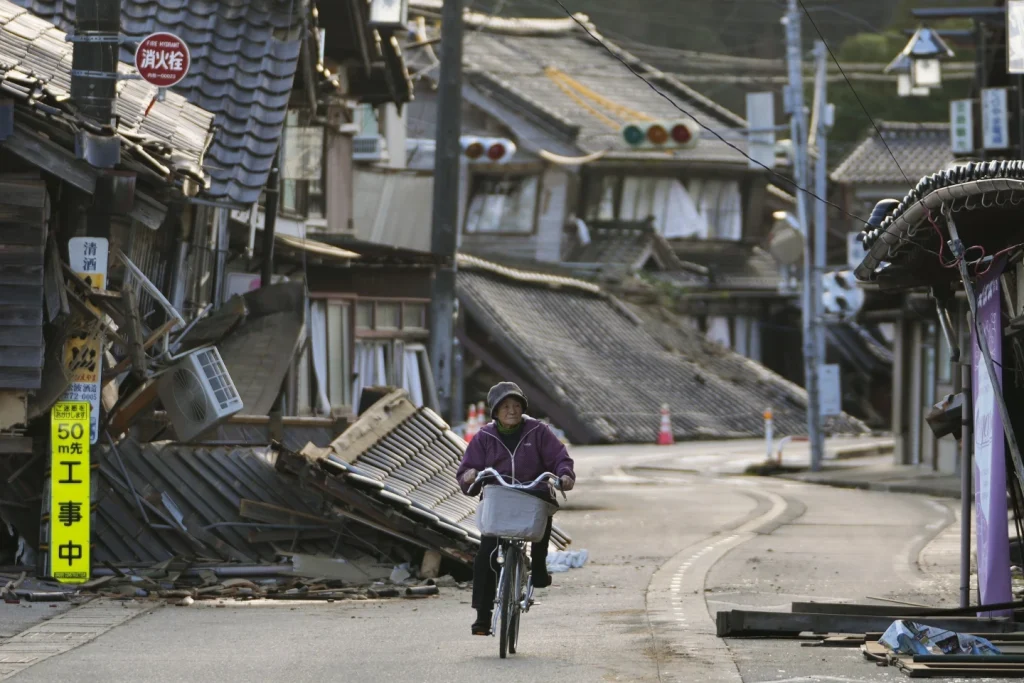The tranquil town of Suzu, Japan was jolted from its peaceful existence by the violent tremors of a magnitude 7.6 earthquake that struck the region on a fateful Monday.
As the dust settled and the sun rose on the aftermath, the true extent of the devastation became painfully clear.
Collapsed homes, shattered infrastructure, and the haunting echoes of tragedy painted a grim picture of the disaster’s toll on the community.
The resilient spirit of the Japanese people, however, shone through as rescuers tirelessly sifted through the rubble in a race against time to find survivors and bring hope to a shattered landscape.
In the wake of this catastrophic event, the world turned its gaze to the Ishikawa prefecture and the surrounding area, where the seismic upheaval had wrought havoc on a scale that defied comprehension.
Thousands of buildings lay in ruins, their once-sturdy foundations reduced to mere rubble. Fires raged unchecked, adding to the chaos and destruction that gripped the region.
As if the earthquake’s fury was not enough, the looming threat of tsunamis cast a shadow of fear and uncertainty over an already traumatized populace.
Amid the chaos and despair, the toll of human life emerged as a stark reminder of the earthquake’s deadly potency.
At least 73 souls had been claimed by the unforgiving force of nature, leaving behind a void that could never be filled.
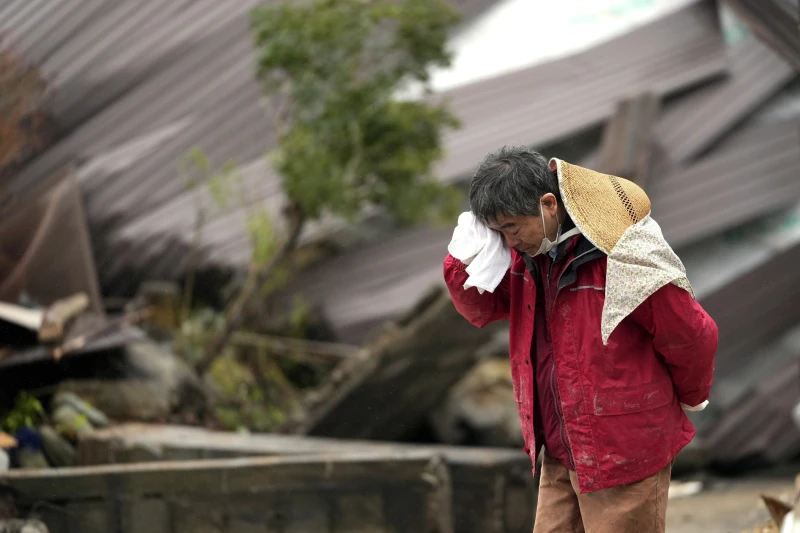
As the days passed, the number of officially missing individuals stood at 15, a testament to the grim reality that some may never be reunited with their loved ones.
The weight of loss and uncertainty hung heavy in the air, casting a pall over the once-vibrant community.
Yet, amidst the devastation and heartache, there emerged a glimmer of hope – a beacon of resilience that refused to be extinguished.
The valiant efforts of the rescue teams, undeterred by the daunting task before them, stood as a testament to the indomitable human spirit.
With unwavering determination, they combed through the debris, driven by the belief that every life was worth saving.
Their tireless efforts embodied the unwavering commitment to solidarity and compassion that defines the human response to adversity.
As the days turned into nights and the search for survivors continued, the world watched with bated breath, holding onto the fragile hope that amidst the ruins, miracles could still unfold.
The outpouring of support and solidarity from across the globe served as a poignant reminder of the interconnectedness of humanity in the face of calamity.
From relief efforts to messages of solidarity, the collective response to the earthquake underscored the power of compassion to bridge the gaping wounds left by disaster.
In the aftermath of the Ishikawa earthquake, the road to recovery stretched out before the shattered community, a daunting path fraught with challenges and uncertainties.
Rebuilding what had been lost, both in physical infrastructure and in the shattered lives of the survivors, would require unwavering determination and sustained support.
The scars left by the earthquake would serve as a poignant reminder of the fragility of life, but also as a testament to the resilience and strength that lay within the human spirit.
As the world grappled with the aftermath of this harrowing event, the lessons learned from the Ishikawa earthquake would resonate far beyond the borders of Japan.
It served as a stark reminder of the awesome power of nature, and the imperative for preparedness and resilience in the face of such calamities.
The collective response to the disaster, marked by solidarity, compassion, and unwavering determination, would stand as a testament to the unbreakable human spirit in the face of adversity.
In conclusion, the earthquake that rocked the Ishikawa prefecture and the surrounding area will forever be etched in the annals of history as a testament to the resilience, compassion, and solidarity that define the human response to tragedy.
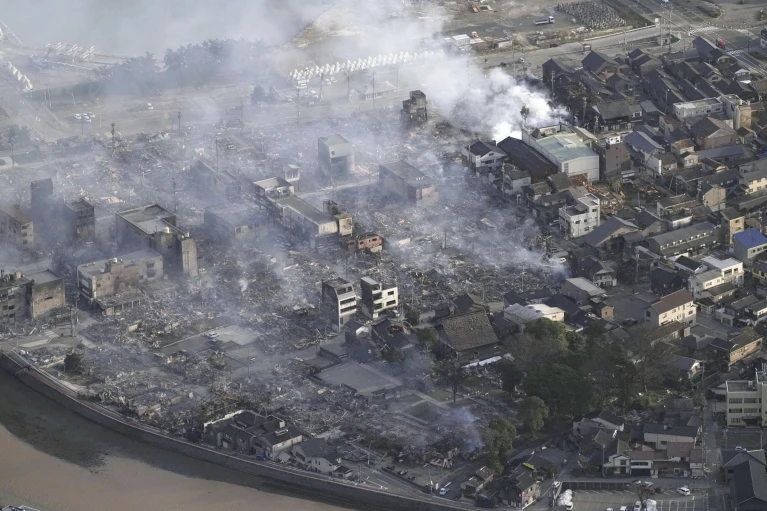
As the community of Suzu and its neighboring regions grapple with the arduous task of rebuilding and healing, the world stands in solidarity, offering support and hope for a brighter tomorrow.
The Ishikawa earthquake, with its devastating toll and stirring displays of human compassion, will serve as a poignant reminder of the indomitable spirit that unites us all in the face of adversity.
In the wake of Monday’s devastating earthquake, the resilient community of Suzu in the Noto peninsula, situated along the picturesque Sea of Japan, has come together to provide aid and support for the affected individuals.
Amidst the chaos and uncertainty, an evacuee has selflessly stepped forward to volunteer, taking on the responsibility of grilling pieces of fish at a temporary evacuation center.
This act of generosity and compassion exemplifies the unwavering spirit and solidarity of the community in the face of adversity.
It is a testament to the strength and resilience of the human spirit, as individuals unite to offer assistance and comfort to those in need during this challenging time.
The selfless actions of this evacuee serve as a poignant reminder of the power of human kindness and the ability to find hope and solace even in the midst of tragedy.
The collective efforts of the community in Suzu stand as a beacon of resilience and compassion, demonstrating the capacity for individuals to come together and support one another in times of crisis.
As the people of Suzu rally together to provide aid and comfort, they embody the spirit of compassion and solidarity that serves as an inspiration to us all.
On the somber morning of January 2, 2024, a scene of devastation unfolded in Wajima, Ishikawa prefecture, Japan, as people solemnly navigated through the charred remnants of a once-thriving marketplace that had been ravaged by fire in the aftermath of a powerful earthquake.
The air was heavy with the acrid scent of smoke, and the once-vibrant hub of commerce now lay in ruin, bearing witness to the destructive force of nature.
Amidst the debris and twisted metal, the resilience of the human spirit was evident as individuals, with solemn determination, sought to piece together their shattered community and rebuild in the face of adversity.
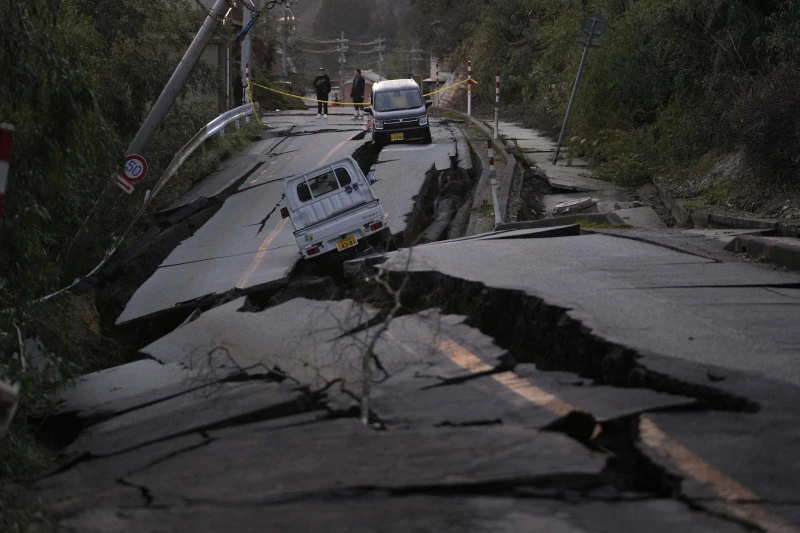
This poignant display of unity and fortitude in the wake of tragedy serves as a testament to the unwavering strength and perseverance of the human spirit in the face of unforeseen calamity.
As the sun rose over the scarred landscape, it cast a glimmer of hope upon the resilient souls who were steadfast in their resolve to overcome the challenges that lay ahead.
The recent devastating events in Suzu, a coastal city with a population of approximately 15,000, have left a deep impact on the community.
The city, which was also affected by landslides, witnessed the heart-wrenching scene of a man weeping as the body of a family member was recovered from a collapsed home.
This tragic event has shaken the entire region, prompting residents to seek refuge and support at evacuation centers, where they can find respite, warmth, and nourishment.
Amidst the chaos, firefighters and members of the Japanese Self Defense Force have been tirelessly sifting through the debris of toppled homes and other structures in a desperate attempt to locate any individuals who may still be trapped.
With each passing moment, the window of opportunity for survival grows smaller, intensifying the urgency of their search and rescue efforts.
The neighboring town of Anamizu, situated approximately 40 kilometers (25 miles) southwest of Suzu, has also borne the brunt of the earthquake’s destructive force.
Drivers cautiously navigate through streets that have been marred by the aftermath of the seismic activity, contending with the visible signs of damage and upheaval.
Meanwhile, in Waijima, a city home to nearly 30,000 people, the aftermath of the earthquake has left a trail of devastation in its wake.
Firefighters bravely tread through the remnants of the once vibrant marketplace, now reduced to a haunting landscape of gray ash and rubble, the result of a fire ignited by the violent tremors.
These harrowing accounts underscore the profound impact of natural disasters on the lives of individuals and communities.
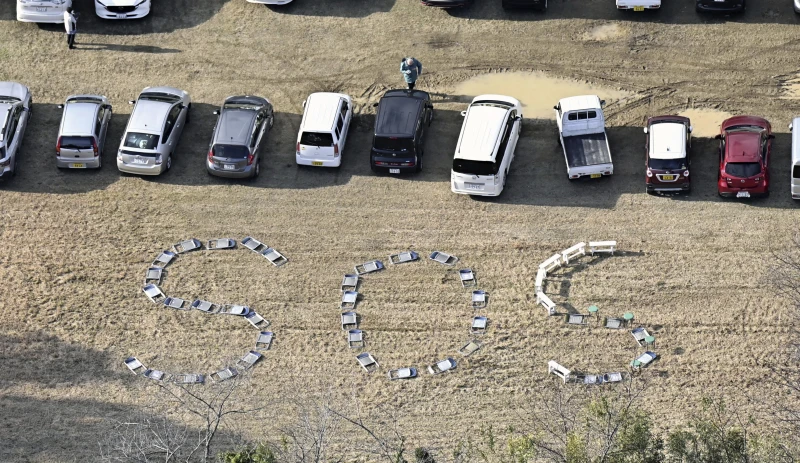
The human toll, the physical destruction, and the emotional turmoil serve as poignant reminders of the fragility of human existence in the face of nature’s formidable forces.
In times of such adversity, it is crucial for communities to come together in solidarity, offering support, comfort, and aid to those affected by the calamity.
The resilience and compassion displayed by individuals and organizations in the wake of such tragedies exemplify the unwavering human spirit and the capacity for empathy and altruism in the face of adversity.
As the affected regions grapple with the arduous process of recovery and rebuilding, it is imperative for both local and national authorities to mobilize resources, provide assistance, and implement measures to mitigate the long-term impact of the disaster.
Furthermore, fostering a culture of preparedness, resilience, and disaster risk reduction is essential in safeguarding communities against future adversities.
The events in Suzu, Anamizu, and Waijima serve as a stark reminder of the unpredictable and devastating nature of natural disasters.
They call upon us to reflect on the importance of disaster preparedness, community resilience, and the imperative of extending compassion and support to those in need.
In the face of adversity, it is through unity, empathy, and concerted efforts that communities can emerge stronger and more resilient, transcending the challenges that lie in their path.
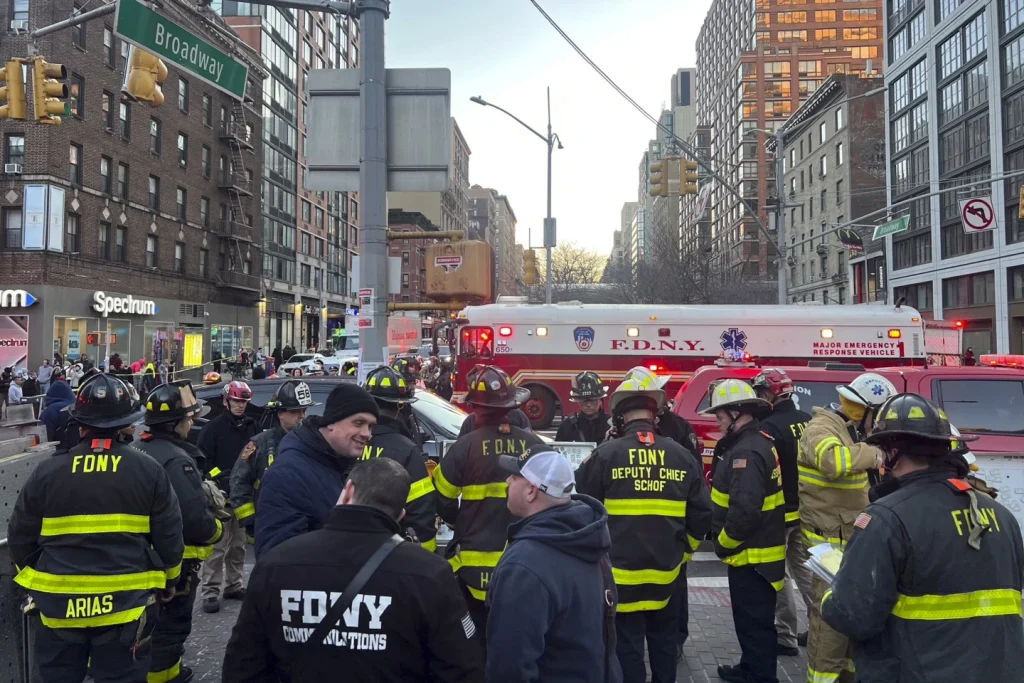
In conclusion, the recent events in these coastal cities have underscored the profound impact of natural disasters on individuals and communities, highlighting the need for collective resilience, compassion, and preparedness in the face of adversity.
As the affected regions embark on the journey of recovery, it is imperative for society as a whole to stand in solidarity, offering support and assistance to those in need, and working towards building a more resilient and compassionate future.
